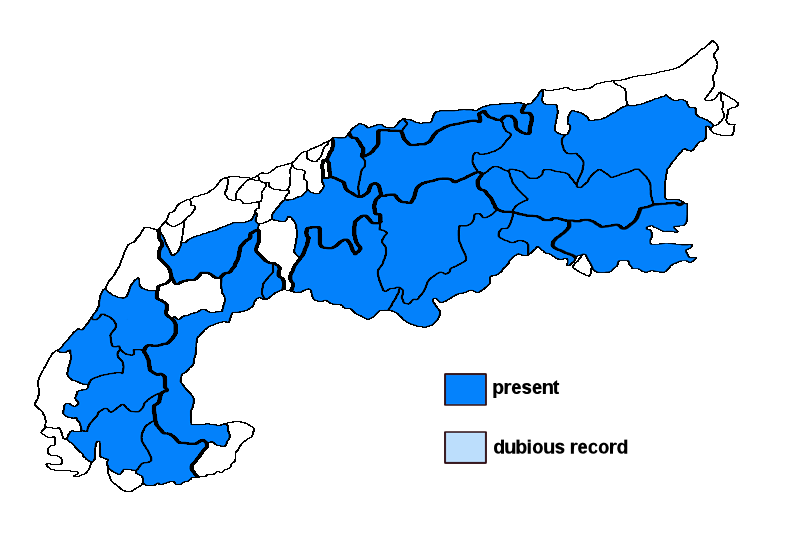Gyalolechia epiphyta (Lynge) Vondrák
Syn.: Caloplaca epiphyta Lynge, Caloplaca laricina Rondon, Caloplaca xanthostigmoidea auct. non (Räsänen) Zahlbr., Gyalolechia xanthostigmoidea auct. non (Räsänen) Søchting, Frödén & Arup
Lichenised.
Substrate: , , calciferous soil, lignum
Altitudinal range: from the montane belt (potential vegetation: deciduous forests dominated by Fagus sylvatica and closed coniferous forests with Picea abies) to the alpine belt (potential vegetation: treeless Alpine grasslands and tundras, to the lower limit of perennial snow and the equilibrium line of glaciers)
Note: this lichen is widespread in the arctic and temperate-montane to alpine zones of the Northern Hemisphere, mainly in continental regions, being usually epiphytic or epixylic (often on Juniperus), but it also occurs on soil and mosses in rock crevices over calcareous rocks (e.g. on boulders visited by birds) in arctic-alpine habitats or in steppes; the relationships with Caloplaca bryochrysion await clarification. The epiphytic Caloplaca xanthostigmoidea is based on a type from Eastern North America and is apparently a different species.
Austria: Vorarlberg; Tirol; Salzburg; Kärnten; Steiermark; Germany: Oberbayern; Schwaben; Switzerland: Graubünden; Valais; France: Alpes-de-Haute-Provence; Haute-Alpes; Alpes-Maritimes; Isère; Savoie; Italy: Friuli; Veneto; Trentino Alto Adige; Lombardia; Piemonte; Slovenia: Alpine and Pre-Alpine Slovenia;





